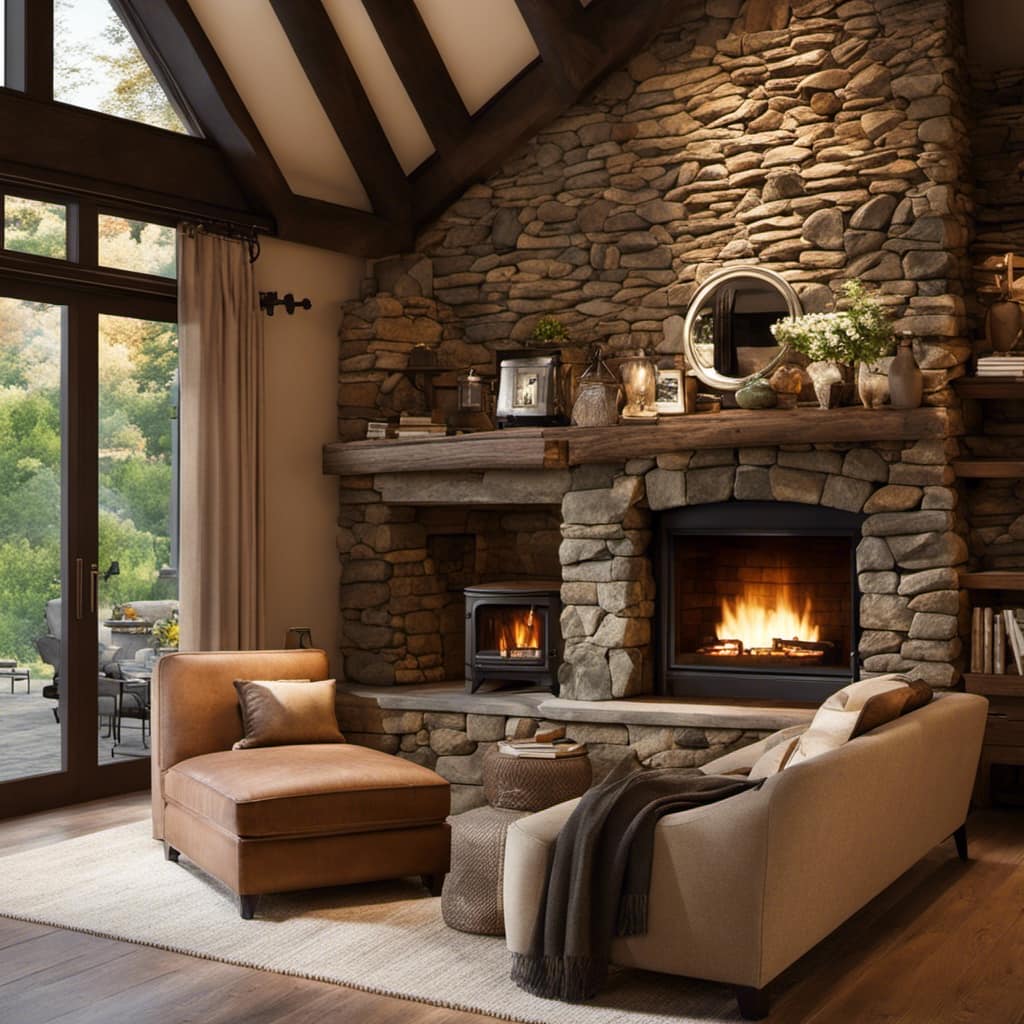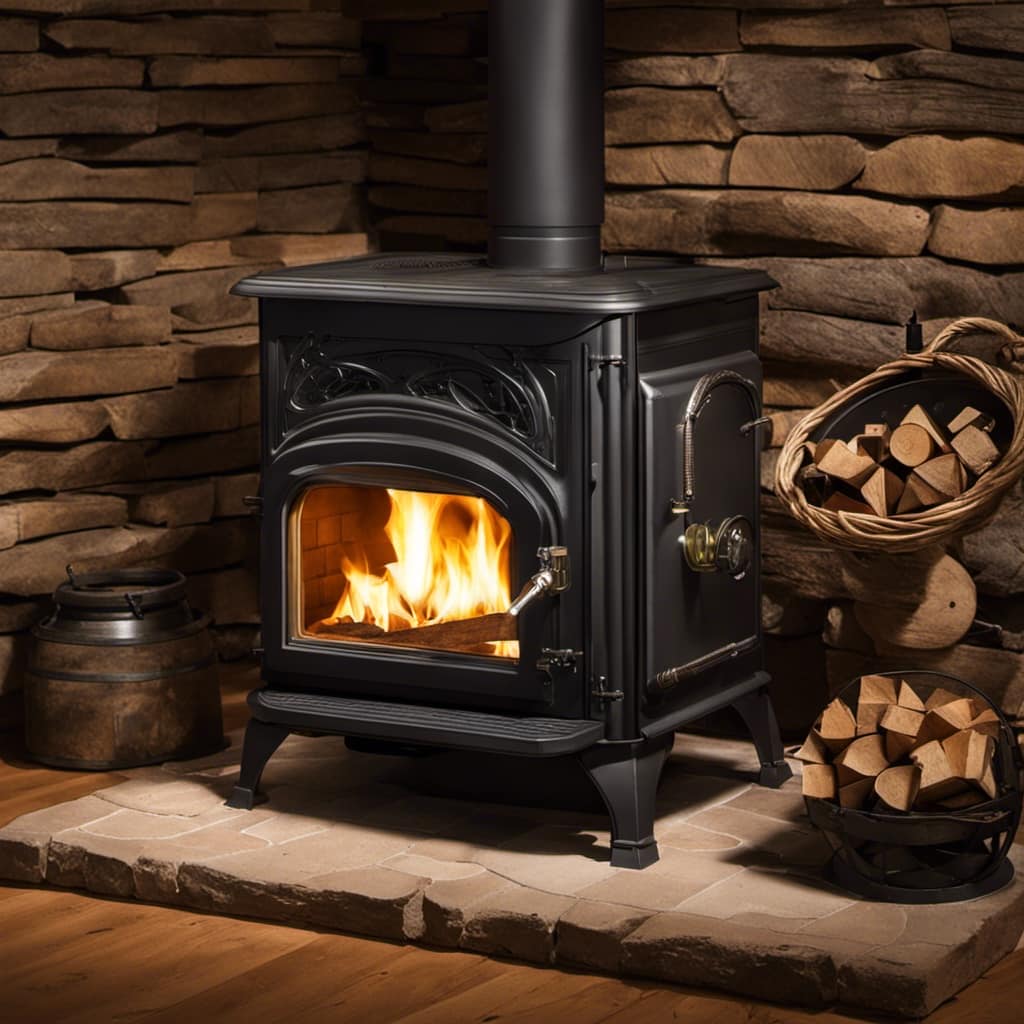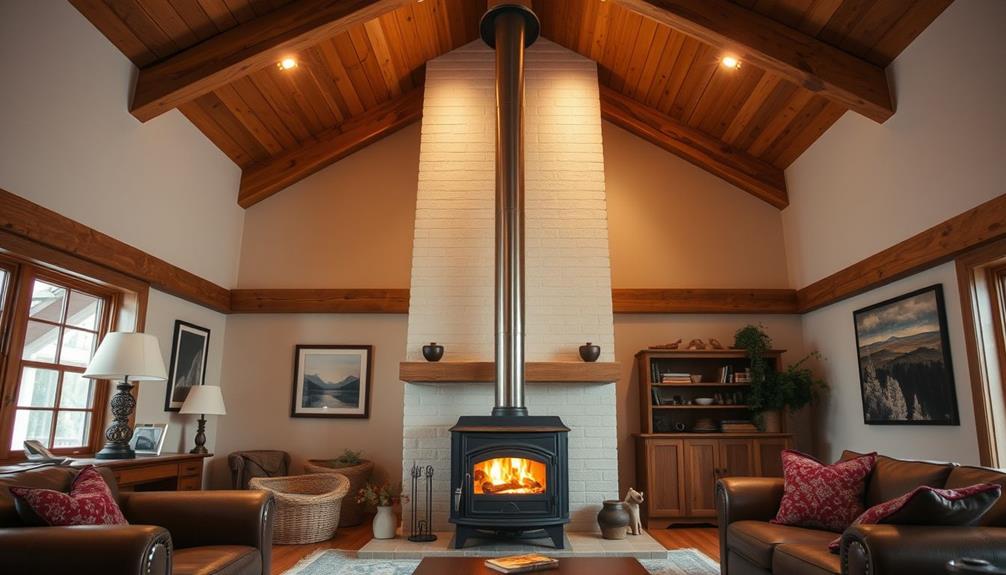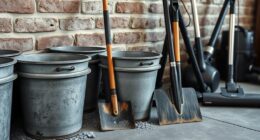
After extensively using wood stoves, I frequently question if the pipes can endure the heat and wear over time. Will they stand the test of time or require frequent replacement?
In this article, we’ll explore the lifespan of wood stove pipes, factors that affect their durability, signs of wear and tear to watch out for, maintenance tips to extend their lifespan, and when it’s time to replace them.
Get ready to stoke the fire and learn all about wood stove pipes.
Key Takeaways
- The lifespan of wood stove pipes can be affected by factors such as environment, installation techniques, materials used, and regular maintenance.
- Signs of wear and tear in wood stove pipes include rust or corrosion, cracks or holes, smoke or harmful gases escaping, decreased efficiency, and buildup of creosote and debris.
- Regular cleaning, inspection for damage or corrosion, ensuring proper ventilation, monitoring moisture content in firewood, and installing a chimney cap can help extend the lifespan of wood stove pipes.
- Common issues that can reduce the lifespan of wood stove pipes include improper installation, leaks and inefficient performance, accumulation of creosote and debris, reduced airflow, and increased risk of chimney fires.
Factors Affecting the Lifespan of Wood Stove Pipes
Based on my research, there are several factors that can affect the lifespan of wood stove pipes. One of the most significant factors is the environment in which the pipes are installed. Extreme temperatures, such as excessive heat or freezing cold, can cause the pipes to deteriorate more quickly.

Moisture is another environmental factor that can negatively impact the lifespan of wood stove pipes. When moisture gets trapped inside the pipes, it can lead to rust and corrosion, weakening the structure over time.
Proper installation techniques also play a crucial role in determining how long wood stove pipes will last. It’s essential to ensure that the pipes are correctly sized and securely fastened to prevent any leaks or gaps. Additionally, using high-quality materials and following manufacturer guidelines for installation can help prolong the lifespan of the pipes.
Regular maintenance, including cleaning and inspection, is also important to identify any potential issues early on and address them promptly.
Signs of Wear and Tear in Wood Stove Pipes
I’ve noticed some signs of wear and tear in my wood stove pipes. Over time, these pipes can become damaged due to the intense heat and constant use.

One common sign of wear is rust or corrosion on the surface of the pipes. This can weaken the pipes and lead to leaks or even a complete failure.
Another indication of damage is cracks or holes in the pipes, which can cause smoke and harmful gases to escape into your home.
It’s important to address these issues promptly to prevent further damage and ensure the safe operation of your wood stove. Possible repairs may include replacing damaged sections of the pipe or applying sealant to fix leaks.
Regular cleaning is also crucial, as buildup of creosote and debris can contribute to pipe deterioration.

By properly maintaining and addressing any signs of wear and tear, you can extend the lifespan of your wood stove pipes and enjoy the warmth and comfort of your stove for many years to come.
Now, let’s discuss some maintenance tips for extending the lifespan of wood stove pipes.
Maintenance Tips for Extending the Lifespan of Wood Stove Pipes
Regular cleaning and inspection are essential for keeping my wood stove pipes in good condition and ensuring they last as long as possible. As someone who’s been using a wood stove for many years, I’ve learned a few maintenance tips that have helped me extend the lifespan of my wood stove pipes.
Here are some techniques I swear by:

- Regularly clean the pipes using a chimney brush to remove creosote buildup.
- Inspect the pipes for any signs of damage or corrosion, and promptly repair or replace any affected sections.
- Ensure proper ventilation by keeping the air vents open and free from obstructions.
- Use a moisture meter to monitor the moisture content in the firewood, as burning wet wood can lead to increased creosote buildup.
- Install a chimney cap to prevent debris, animals, and rainwater from entering the pipes.
Common Issues That Can Reduce the Lifespan of Wood Stove Pipes
One issue that can significantly impact the lifespan of my wood stove pipes is improper installation, which can lead to leaks and inefficient performance. Proper installation is crucial for ensuring the longevity and efficiency of the pipes.
When installing wood stove pipes, it’s essential to follow the manufacturer’s instructions and guidelines. This includes correctly connecting and sealing the pipes to prevent any leaks.
Additionally, regular chimney cleaning is vital to maintain the optimal performance of the wood stove pipes. Over time, creosote and debris can accumulate in the chimney, reducing airflow and increasing the risk of chimney fires. Regular cleaning helps to prevent blockages and ensures that the wood stove pipes function properly.
When to Replace Wood Stove Pipes
As a homeowner, I need to be aware of signs of wear and damage in my wood stove pipes to determine when replacement is necessary. Wood stove pipes have a lifespan that can vary depending on several factors, such as the quality of the pipes, the frequency of use, and the type of fuel being burned. However, there are certain indicators that can help me determine when it’s time for a replacement:

-
Rusting or corrosion: If I notice rust or corrosion on the pipes, it may be a sign that they’ve deteriorated and need to be replaced.
-
Cracks or holes: Any visible cracks or holes in the pipes can lead to leaks or inefficient operation, indicating the need for replacement.
-
Warping or bending: Pipes that have warped or bent over time may no longer fit properly, and should be replaced for optimal performance.
-
Excessive creosote buildup: A buildup of creosote can increase the risk of chimney fires, so if I notice excessive deposits, it may be time to replace the pipes.

-
Age: Even without visible signs of wear, wood stove pipes have a limited lifespan. If my pipes are nearing the end of their expected lifespan, it’s a good idea to consider replacement to ensure safety and efficiency.
Frequently Asked Questions
Can I Use Any Type of Wood Stove Pipe for My Wood Stove?
I can use different types of wood stove pipes for my wood stove, but it’s important to consider the pros and cons. Some types may be more durable or efficient, while others may be cheaper but less effective.
How Often Should I Clean My Wood Stove Pipes to Ensure Their Longevity?
I inspect my wood stove pipes for damage every year to ensure their longevity. It’s important to look for signs like rust, holes, or loose connections. Regular maintenance helps prevent potential issues and keeps the pipes functioning properly.
Can I Use a Wood Stove Pipe That Is Slightly Damaged or Has a Small Hole?
Using damaged wood stove pipes or ones with small holes can have negative effects on their performance. It can lead to reduced efficiency, increased risk of fires, and potential health hazards from carbon monoxide leaks.

Are There Any Specific Weather Conditions That Can Affect the Lifespan of Wood Stove Pipes?
Extreme temperature fluctuations and high humidity levels can significantly impact the lifespan of wood stove pipes. These conditions can cause expansion and contraction, leading to cracks and leaks. Regular maintenance and inspections are crucial to ensure the longevity of the pipes.
Is It Possible to Repair a Wood Stove Pipe Instead of Replacing It?
Repairing wood stove pipes can be a viable option instead of replacing them. Common issues like leaks or cracks can often be fixed with proper maintenance. However, it’s important to assess the overall condition and consult a professional for a long-lasting solution.
Conclusion
After considering the factors that affect the lifespan of wood stove pipes, it’s clear that regular maintenance and proper care can significantly extend their durability.
By promptly addressing signs of wear and tear and following maintenance tips, homeowners can ensure their wood stove pipes last for years to come.

Remember, just like a well-tended garden, a properly maintained wood stove pipe can bloom with warmth and comfort in your home, providing a cozy atmosphere for all to enjoy.
Growing up surrounded by the vast beauty of nature, Sierra was always drawn to the call of the wild. While others sought the comfort of the familiar, she ventured out, embracing the unpredictable and finding stories in the heartbeat of nature.
At the epicenter of every remarkable venture lies a dynamic team—a fusion of diverse talents, visions, and passions. The essence of Best Small Wood Stoves is crafted and refined by such a trio: Sierra, Logan, and Terra. Their collective expertise has transformed the platform into a leading authority on small wood stoves, radiating warmth and knowledge in equal measure.











